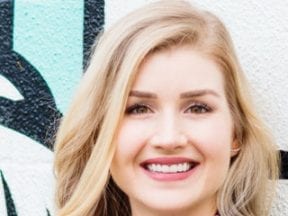Jay Sauceda launched his ecommerce fulfillment company, Sauceda Industries, in 2013 in Austin, Texas. He says packing and shipping products is easy. What’s difficult, he stated, is managing unforeseen events.
“The shipping business is, essentially, the exceptions management business,” he told me. “Putting products in a box and sending them out is the easiest part of the job. But what happens when a client’s purchase order is off by 15 units so that we can’t fulfill all orders? Or a client’s marketing campaign launches before we have the inventory?”
Sauceda and I recently spoke about his company’s founding, the complexities of onboarding clients, and how to choose a third-party fulfillment provider, among other topics. Our entire audio conversation is embedded below. The transcript that follows is edited for length and clarity.
Eric Bandholz: Tell us about your business.
Jay Sauceda: In 2013 I launched an ecommerce site called Texas Humor. It sells Texas pride stuff, like shirts.
When we were getting off the ground, I reached out to a few fulfillment companies. Most told me that we were too small. So I connected our Shopify platform to ShipStation, and my wife and I would pack orders and ship them. We did that for about six months.
We were in a 500-foot warehouse. I thought, “How can I fill this thing up and keep our employees busy?” So I started asking folks I knew who had side businesses if they needed fulfillment help.
Fast forward to 2021, and we’re a third-party fulfillment company, Sauceda Industries, in a 126,000 square foot warehouse in Austin. We have about 50 merchant clients and about 100 employees. We ship a ton of stuff every day. It’s wild.
Bandholz: So you’ve got Texas Humor and Sauceda Industries.
Sauceda: Yes. About four years ago, the fulfillment company started to grow. It’s now our priority. For the first couple of years, it was there to help us cover costs.
Our first big client was Howler Brothers, a clothing brand here in Austin. Shortly thereafter, around 2017, we landed other clients.
We’ve worked with Howler, William Murray Golf, a bra company called Pepper, and Tecovas Boots, which is here in Austin.
Another great client is Duck Camp. It’s a bird hunting brand that’s just exploded in the last couple of years. They came to us with just an idea. We liked their approach and their go-to-market strategy. They’re now one of our biggest clients. A lot of 3PLs would never have signed them in that first year. We’re willing to take a chance on a brand with no volume if we understand what they’re trying to do.
Bandholz: When we launched Beardbrand in 2013, most 3PLs were not focused on ecommerce.
Sauceda: Right. The process of fulfilling ecommerce orders didn’t exist at a lot of those places. Providers such as ShipBob and ShipMonk, which were launched with ecommerce in mind, ate their lunch. Our company operates in a middle place, between huge logistics companies, such as XPO Logistics and GEODIS, and the ShipBobs and the ShipMonks.
In particular, we specialize in complex fulfillment needs. Most 3PLs want simplicity. For example, Howler Brothers had a ton of SKUs. We didn’t know at the time they were any different than other merchants. So we got good at doing the complex.
We’re now a solid spot for a company until it hits $40 million, $50 million in annual revenue — perhaps larger with our new warehouse.
Our average merchant sells 100 to 300 orders a day. Overall, we ship between 5,000 and 10,000 packages daily.
The other side of our business is the wholesale component, where we ship to physical retailers, such as Target and Walmart.
We still take on small companies, but we charge for some onboarding tasks, which can be extensive. More often than not, we’re helping an entrepreneur build a store and streamline it for scale. If we get the sense that the company is not ready to grow, we won’t say “no” but, instead, “not right now.”
Bandholz: Everyone bitches about their 3PL. How do you overcome that?
Sauceda: I have two answers. First, the shipping business is, essentially, the exceptions management business. Putting products in a box and sending them out is the easiest part of the job.
But here’s the reality. What happens when a client’s purchase order was off by 15 units so that our stock on hand is too short to fulfill orders?
Or, how can we satisfy a client who just launched a marketing campaign, even though the inventory landed on our dock today? In that case, the client may give us the green light to stock quickly without counting, saying, “It’s all there.” And then we find out that they’re 20 short. What do we do with those 20 orders?
Or what do we do when a customer emails at 4:45 p.m. and absolutely needs something shipped out today?
Those are examples of exceptions.
The other piece is that very few merchants understand fulfillment. They’ve never been through the experience themselves. We rarely hear a client say, “I’ve spent time in a warehouse. I know how much this sucks.”
Bandholz: Let’s talk about the technology. At what point do you automate part of the process?
Sauceda: You can automate the hell out of a warehouse, but you’re never going to replace humans. I don’t see automation as a zero-sum game. It’s more complementary. We don’t deploy a lot of automation yet because most of our merchants lack the processes, such as using barcodes.
I’ve seen some innovative companies, such as 6 River Systems, which Shopify purchased. 6 River uses robots that drive around the warehouse and deliver products to human employees. Rather than using pickers like I have who walk the entire floor, 6 River keeps people in the aisle who become specialists of that area. They’re grabbing the product from the robots and putting it on a cart, which then drives to the next area.
I’m excited by that type of automation. But for now, our primary focus is customer service. Our warehouse management software is ShipHero. We have a positive relationship with them. We’ve enjoyed a good overall experience with their software. It powers our warehouse.
Bandholz: Some merchants listening to this are likely considering a 3PL. What should they expect in terms of service and pricing?
Sauceda: For service, the biggest signal is how much listening is the 3PL doing when you start the conversation? Every merchant is unique. Beware if a 3PL claims they can save 30 percent on postage but does not inquire about your company. Be concerned if you’re not getting questions about your brand, fulfillment challenges, and onboarding needs.
As far as pricing goes, it varies. If you’re shipping standard consumer goods with no custom packaging, you could probably find a 3PL who could do that for $1.00 to $1.75 an order.
If you’re shipping fewer than 100 orders a day, it’s probably going to be closer to $1.75. Getting to the lower end likely requires upwards of 1,000 orders a day. Custom packaging definitely adds to the cost.
Bandholz: Is that with a 24-hour turn?
Sauceda: Yes, a 24-hour turn is typical. For most clients with stable order volume, our service level agreement is that if it comes in today, it will ship by the end of the day tomorrow. It could ship today.
It will ship today if the order arrives by 2:00 p.m. using express carriers such as FedEx or UPS. That’s mostly because the express pickups are at 3:30 or 4:00. We need time to get it on a truck.
Bandholz: Where can listeners learn more about you and Sauceda Industries?
Sauceda: I’m on Twitter (@jaybsauceda) and LinkedIn (@jaybsauceda). The company’s website is SaucedaIndustries.com.




